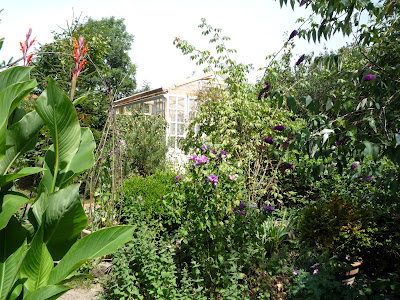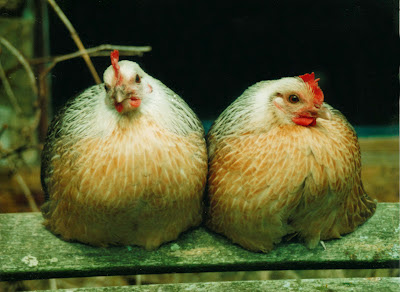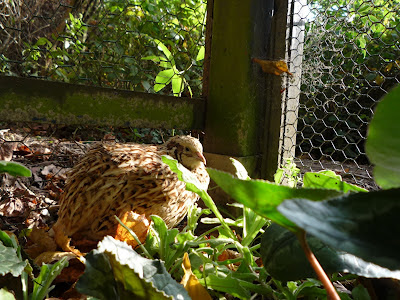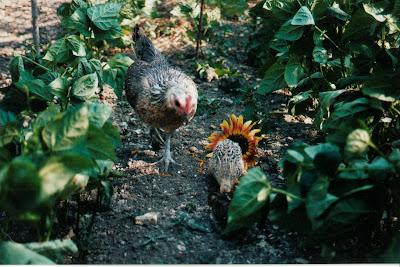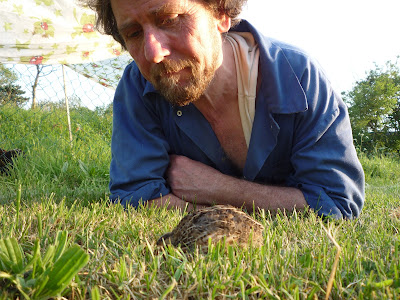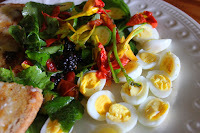Last year I raised another brood of quail chicks with a mother hen and although I made some films of the different stages of development and the joys, trials and tribulations, I have not yet found time to sit down and put the experience onto paper. I'm doing this now in the hope that it will be of use to those amongst you who have contacted me via this blog or my youtube site and others too, who like me would like to raise quail outside the convention of the incubator, wire cage and a cultivated grain diet. I'm going to try and share as much detail as possible but please do write and ask if you need any further information.
Worth their weight in gold - organic quail eggs, our own.
Starting with the basics
Eggs
The two main factors contributing to the success of your hatch and the relative carefree nature of the experience are the quality of the hatching eggs and the nature of the broody. Let's take the eggs first. These, if possible should be from organic stock, a non-existent option in my case and I guess in that of many others, there being no such hatching eggs, or even quail available. Once you have built up enough bloodlines you will be able to breed from your own stock, a position I would have been in, if we had not suffered a bad predator attack the year before. The next best thing, is to find eggs from birds, who have been allowed some outside recreation, or are barn-bred and who have been raised on a non-medicated and non-GMO feed. If you can get organic quail eggs then you are very lucky and should not experience any of the nutritional deficiencies which will be dealt with in a later chapter.
Chicken
Mad Bad and Dangerous to Know
 Bubble throwing herself whole-heartedly into the part. An interpretation unlikely to put her in a strong position for the role of Mummy quail.
Bubble throwing herself whole-heartedly into the part. An interpretation unlikely to put her in a strong position for the role of Mummy quail.The idea of 'a' broody hen is a simplified human interpretation of what is a complex and recurring phase in a bird's life. From all my observations of hens in various stages and states of broodiness, I have come to the conclusion that there is, in fact, no such creature as the above. This is of tantamount importance when choosing the right hen for the job and so in the following paragraphs I'm going to try and break-down exactly what I have observed and I will follow it up with a film showing various examples of broodiness and how this impacts upon and informs my choice. Firstly though, I would like to stress that if you are embarking on raising quail or chicks for the first time you should furnish yourself with a back-up broody in case of problems. That said, in my first ever quail hatch some 12+ years ago I did not have that option and I did manage to get around the problem but then with quail flexibility is all.
Why do hens go broody?
Understanding even just part of this is the key to not making mistakes in hatching and brooding quail. There are, according to my own observations and I can have eight to ten broodies at any one time in my flock, many reasons for a hen to go broody. I'm sure I haven't figured out all of them but the following are to me the obvious ones.
It might seem logical that because of the precocial nature of quail and their high level of activity, a younger mother might be the best suited but a young broody may have ulterior motives...
 To a young hen, or one low in the pecking order, being broody gives status, which it may otherwise take her months or even years to attain. The broody hen and even more so, the mother of chicks, is revered by the whole flock. She has priority at the food bowl and in the case of a garden with several flocks, like our own, has a right of passage through all territories. Her protective and often aggressive behaviour seems to instil fear into the heart of all but the most self-possessed of cockerels or perhaps it is the instinct poultry seem to have that these chicks are their future. In all my years keeping poultry, I have only had one cockerel, an Ardenner, who has ever challenged the dominant position of a hen with chickens. Motherhood brings out the monogamy in many cockerels and in particular if they have an inkling that the chicks could be theirs.
To a young hen, or one low in the pecking order, being broody gives status, which it may otherwise take her months or even years to attain. The broody hen and even more so, the mother of chicks, is revered by the whole flock. She has priority at the food bowl and in the case of a garden with several flocks, like our own, has a right of passage through all territories. Her protective and often aggressive behaviour seems to instil fear into the heart of all but the most self-possessed of cockerels or perhaps it is the instinct poultry seem to have that these chicks are their future. In all my years keeping poultry, I have only had one cockerel, an Ardenner, who has ever challenged the dominant position of a hen with chickens. Motherhood brings out the monogamy in many cockerels and in particular if they have an inkling that the chicks could be theirs.Although a young hen will go broody for improved status, that does not mean she will actually want to carry it through to full motherhood. You should be aware that her thinking may also be influenced by another reason for sitting eggs and that is to get away from the attention of cockerels.
In Spring a young cockerel's fancy turns to chickens...
Having a forest garden setting for my hens and with a rather laisser faire attitude to my birds, I can end up in Spring with a few unplanned chicks, some of which will by the law of averages and I believe, the influence of seasonal temperatures, may be male. I have four flocks in the garden and a good spattering of males, these live in harmony with each other and the hens but the arrival of new cockerels at maturity can cause some problems. Even if you do not have a similar establishment, the influence of any type of aggressive behaviour, whether from a male or female in the flock, can have a tendency to promote broodiness as a way of physical and mental escape.
Older males within the flock have a côterie of females or a favourite hen and in general all the hens and cockerels in my garden are paired off. This means that any new intake of cockerels finds itself marginalised as far as l'amour is concerned and spends a lot of time running after mostly younger females. The latter are targeted because, unlike older and more experienced hens, they are often for whatever reasons, unprepared to fight for their honour. This can trigger a rash of broodiness among a younger flock, which can however exacerbate the problems. The cockerels become opportunists, jumping on the sitting hens but a good dominant cockerel soon puts a stop to that!
Broodiness, like dust-bathing or yawning in humans, seems to be something which tends to 'go through' a flock, so with the younger hens you really need to be sure it isn't just a passing fad.
For the older hens, the two above reasons should also be considered when choosing a broody. However, in addition some of them are serial sitters, after all if you are sitting you are not expected to do much else. Over the years my comportment has taught my hens that I'll bring breakfast and dinner 'in bed', take them indoors to a nice cool room in the heat of Summer and install them in an individual hay-filled cardboard box. Hens aren't stupid and they have good memories. This does not matter if they are intent on seeing the thing through but some hens are actually just keen on sitting. They do not under any circumstances intend to or expect to have the onerous task of bringing up chicks. Only experience of the individual hen sitting full-term and coping with a hatch and the aftermath of many weeks of hard work will tell you this about your hen... and for quail this is going to be extra, extra hard work.
Next time I will look at the types of hen I have chosen to raise quail and the specific characteristics needed, with five individual case studies. Until then I leave you with this film I made about broodiness and which will introduce you to some more of my flock. To access Part 5 of hatching and Raising Quail Organically with a Mother Hen click here
Thanks for dropping by and please
feel free to comment, ask questions and/or share your own experience of broodies.
© 2014 Sue Cross









